The Moth Has Flown
Hello! Welcome friends! Welcome new readers! There are a bunch of you in the last 2 weeks, yay, so I think I have The Moth to thank for that. If you don’t know what moth I’m referring to, last year I was invited to participate in a live storytelling event called The Moth. About a year after the story-telling night, the stories, which are recorded, are sorted into different themes and arranged into segments for NPR’s The Moth podcast.
I’m grateful for both parts of the two-part experience. First, telling the story live on the Main Stage (these events are held all over the country—and world—I got to tell my story in NYC). I wrote of this story-telling experience in an earlier Substack so check it out if you’re interested in telling your story for The Moth, which I recommend—I explain how you can get started by telling a story on their hotline!
Even though I’ve given a lot of readings, that experience was unique—talking for 12 minutes, without notes, in front of a huge crowd. i’ll never forget how nervous I was that night, walking on stage, stepping up to adjust the microphone in the silence. . .
I couldn ‘t see the audience at all—looking out I could only see blackness and the lights. . .
Even though the crowd was indeed out there. . .
If you’re thinking you couldn’t do this crazy thing, tell a story for 12 minutes without notes, well, I too would have said the same. But by the time you’ve worked with your Moth director (my director was the fabulous Catherine Burns), telling your story, trimming it down (the first time I told my story to Catherine it was 23 minutes), getting feedback on pacing, telling it again, (all of this first part over the phone) then eventually telling your story the night before the show to the other storytellers, you somehow almost feel ready.
And now a year later, I got to sit on my porch with my husband and kids and turn on the radio and hear the way my voice sounds to others (always strange to my ears). And though I know what story I told—about my mom’s Alzheimer’s—parts of what I said still surprised me because I didn’t remember exactly what I said.
The second part of this two-part experience has yielded another kind of affirmation, which is hearing from folks who’ve heard my segment on the radio, and seeing new subscribers from some folks who must have googled me and found The Bethannigan!
All of this has gotten me thinking a lot about the power of narrative. Ken Burns, in his inspirational and deservedly-viral commencement speech at Brandeis, quotes the novelist Richard Powers: “The best arguments in the world,” he said, “Won’t change a single person’s point of view. The only thing that can do that is a good story.” Now that I’ve dabbled in live story-telling, first with a TED talk, now with the Moth, I’ve been cogitation on the difference between telling a story on the page vs. on the stage. In fact, I’ve proposed a panel for AWP on oral storytelling, I hope the panel gets taken because I’d like to hear what other people think of the difference between written and oral stories—and because the fabulous Andrea Askowitz, who runs the story-telling podcast Writing Class Radio, would be on the panel.
Anyway, if you want to listen to my Moth story, here it is. And: thanks, hugely.
Of Fireflies
It’s such a humbling experience to learn how little you know about something. Like—somehow I thought the fireflies in my backyard were just, well, fireflies. Was there any other kind? I never thought about it. I felt lucky we had them, but my curiosity ended there. Until I learned that there’s a special kind of species unique to my area, Snappy Syncs, synchronous fireflies that light up in tandem in reaction to the fireflies around them. I took my family to Wall Doxey State Park, which offers firefly tours for the 2 weeks these male fireflies are out and blinking like beautiful bonkers Christmas lights, trying to attract females. We walked through the forest in the dark, guided only by a few red lights, as flashlights or phones would be harmful to the fireflies by throwing off their signals. For this reason, I have no photos, but this video will give you an idea of what we saw (though I’d like to insist our tour was cooler, as we were deep in the forest). We also saw Cypress fireflies, a species that was first identified at Wall Doxey park just 4 years ago, and Big Dippers and Flashlights. All of these species have different patterns of lighting up—for example, Cypress blinks on and off 5 times rapidly then keeps its lantern on and flies either straight up or straight down). As opposed to the backyard Big Dippers, which light their gold lantern in a slow J shape. These light and movement patterns are the fireflies’ distinct signatures, how they find each other in the dark for a little summer lovin’.
So now I view firefies with more appreciation. THAT is what education can do: keep us from flattening everything we experience out of ignorance and lack of curiosity—instead, we light up, we keep our lantern on.
Something Someone Smarter Than Me Has Said
I’m entering in August my 25th year in the classroom, and I’ve seen a lot of changes, but none so alarming as the push for education to be tied to “outcomes” and the resultant decline of liberal arts majors—English Majors in particular. I know that rising college costs forces students and their parents into this strict economy. We fear our children majoring in English because we want to know they’ll be heading toward a specific job when they graduate, a job that will help them pay off their loans. (Q: How do you get an English major off your porch?
A: Pay him for the pizza.)
But I feel more strongly than ever that the Liberal Arts teaches the critical thinking skills we most need. And I was surprised to see a big $ guy agree with me:
BlackRock COO Robert Goldstein said the investment firm wants to hire liberal arts majors, Fortune reports. “We have more and more conviction that we need people who majored in history, in English, and things that have nothing to do with finance or technology,” said Goldstein, speaking at Fortune’s Future of Finance conference last week. Separately, Goldman Sachs Global Institute co-head George Lee said on Bloomberg Television recently that AI will spark a “revenge of the liberal arts” in business. “Some of the skills that are really salient to cooperate with this new kind of intelligence in the world are critical thinking, understanding logic and rhetoric, the ability to be creative,” Lee said. “It will allow non-technical people to accomplish a lot more—and, by the way, begin to perform what were formerly believed to be technical tasks.”
AI can do a lot for us, but until it can synthesize information and create new kinds of knowledge through metaphors, we need our English majors/pizza deliverers.
Of Hummingbirds
I love them hopelessly. The lastest example: my sneaky new poem in POETRY, “The Last Hummingbird of Summer.” It seems sneaky because it’s a double sonnet. But really it’s sneaky because it starts off being about hummingbirds, and ends up being about. . . MENOPAUSE! There, I said it! A word I don’t recall my mom or her friends ever saying. No wonder the medical establishment is so woefully lacking in good menopause research—when people can’t say a word, they can’t advocate for it to be prioritized.
Hummingbirds, part 2: I got to travel back to my alma mater, The University of Notre Dame, in May, for the Hesburgh Women of Impact Retreat, a deep honor—esp. because I was a bit of a late bloomer during college. I came from such a sheltered, conservative background that I didn’t really know who I was when I got to ND, and there for the first time got to try to figure it out, which was thrilling but embarrassing and messy and error-ridden. So imagine my joy at being invited to address this group of kick-ass women who are leaders of industry and philanthropy, women of impact. I impacted all over the place! My college roommate Carmen introduced me. I spoke to them about micro-memoirs, and how I was inspired by the hummingbird to write a book of short-form nonfiction, and I led them in a writing exercise. Because they are all big wigs I kinda sorta thought they might dip out during my exercise, check their stock portfolios on their phones or whatever big wigs do. But they each wrote a piece based on my prompt and shared what they wrote. It was honestly so moving, and the experience reminded me that we’re all hungry to be creative—we WANT to be creative, though life so often demands the opposite, rule-following and form-filling. But we’re only fully human when we’re in touch with our playfulness, our interiority, our quirks, our secrets, our souls, our unique way of looking at the world. Sometimes I feel so lucky that my job is to help people reconnect with that power.
Also, Notre Dame has a swanky new museum (given by one of the Hesburgh Women of Impact) and I got to see this artwork, below, by Native American fashion artist Jamie Okuma, “All the Things I Hold Dear,” made from antique and contemporary glass beads and Prada Boots. Beneath the red disks protected by spikes (which depict images suggested by Okuma’s sons) there is a secret enclosure with beaded red hearts, “not visible to anyone. My boys are my heart and this symbolism is for no one else to see or understand because you can only know those feelings for your own children.” Fashion that has moved beyond usefulness into art; art that refuses to indulge the viewer’s curiosity but affirms its right to privacy even while on display—I love everything about these, except for the fact that they are behind glass and I can’t wear them:
What I’m reading: Leslie Jamison’s Splinters (nonfiction). Sheila Sundar’s Habitations And I’m re-reading The Outsiders with my 13-y-0 because we’ll see the new Broadway production when we got to NYC this July!
I’m also reading Major Jackson and Clint Smith (poetry) as they’ll be on my panel at the Mississippi Book Festival this September! I hope anyone nearby will come hear them!
What I’m cooking: first pesto of the season. First Insalada Caprese. Mojitos with the garden’s first mint. Cravings, the cookbook by Chrissy Teigen, shouldn’t be as good as it is. Can these skinny celebrities really cook, really eat? I can’t answer that but I can tell you her cook book has this Roasted Cauliflower, Feta, and Orzo Salad recipe which I made last year and loved. We tend to think of cauliflower as winter food but my farmer’s market has it now. I’ll make this Sunday when we go to the Summer Concert Series here and picnic while listening to music. And maybe spotting a few fireflies.
Other updates? Remember my poll, to see if I should title my new piece “Irish Exit” or “Irish Goodbye”? Thanks for voting! “Irish Goodbye” was the term familiar to 63% of voters, so that’s what I’m going with.
Remember the office reno? It’s done! Before, during the height of finals, at my messiest:
Then came the day my bookshelf collapsed in on itself—it literally couldn’t hold one more book. First, I was just going to replace the bookshelf. But eventually I got California Closets to build a whole new system! Here’s the after:
Moths, Fireflies, and Hummingbirds—these are summer things that are brief, bright, an beautiful. May they remind us to appreciate the brief joys that announce themselves and demand to be admired. Summer well, friends.
In closing, I’ll remind you:
The Bethannigan is free! The Bethannigan doesn’t want your money. The Bethannigan only wants your love. Praise me, pet me, share me, feed me. Take me home and tell your friends.




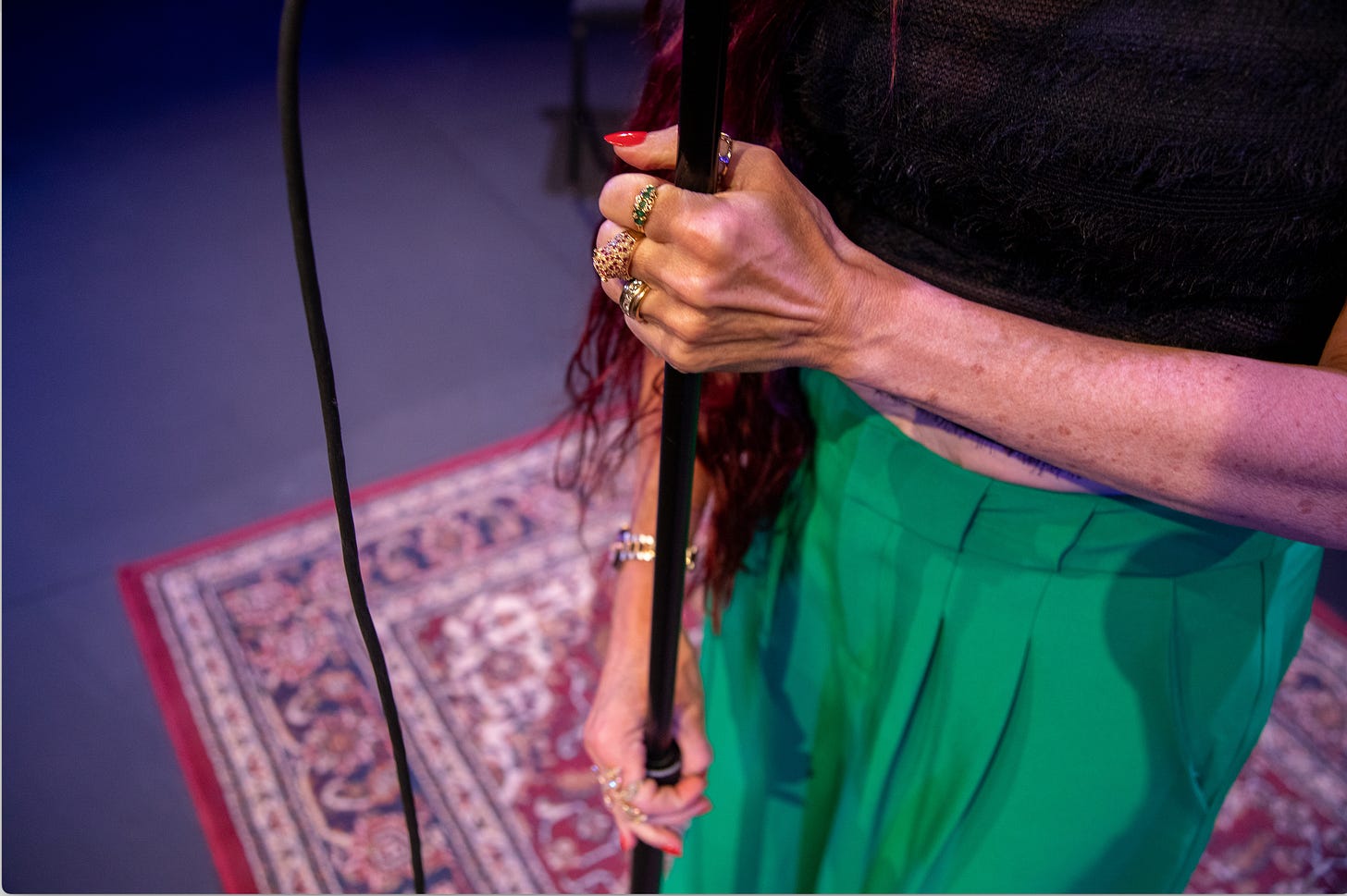

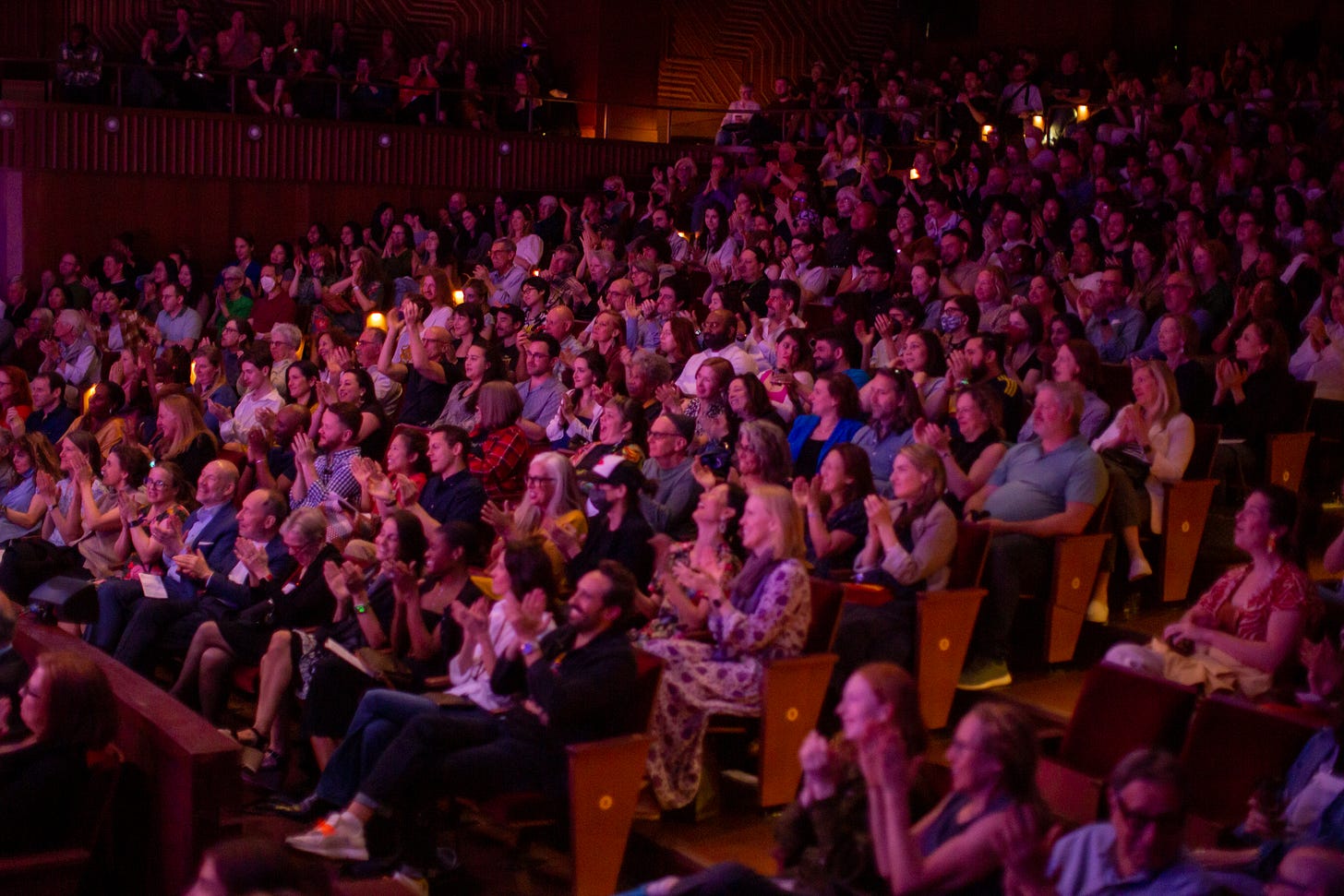
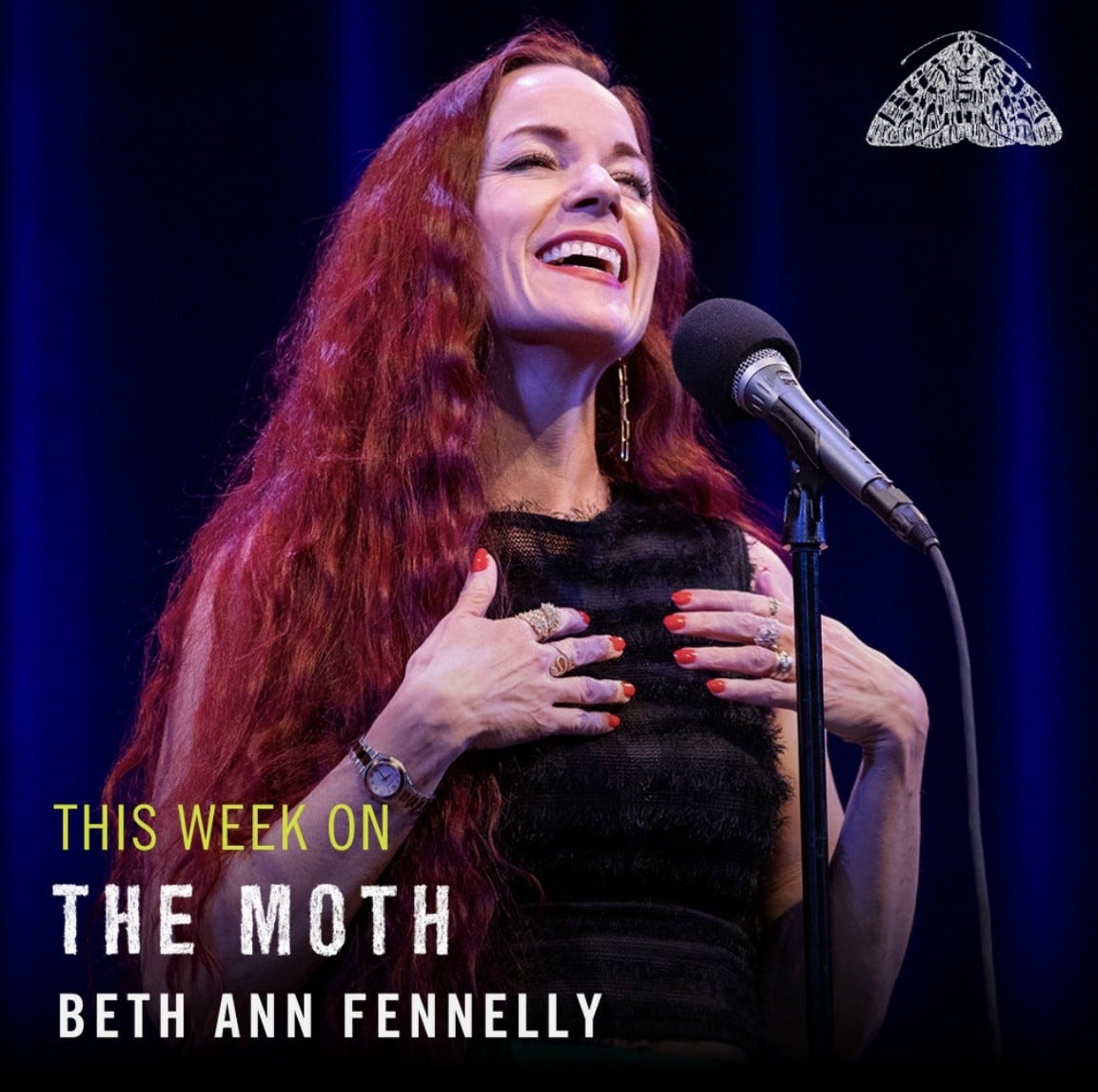

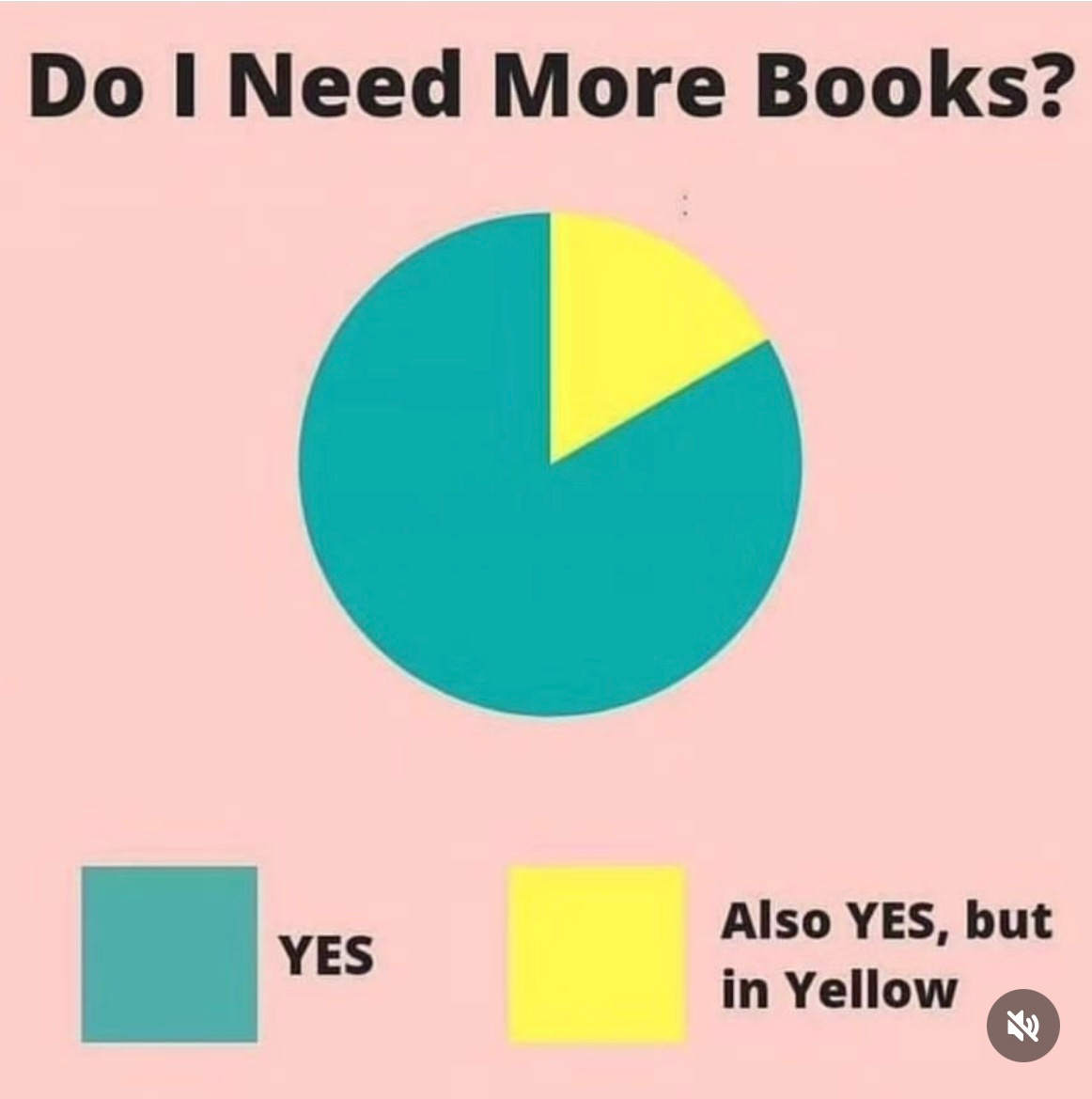
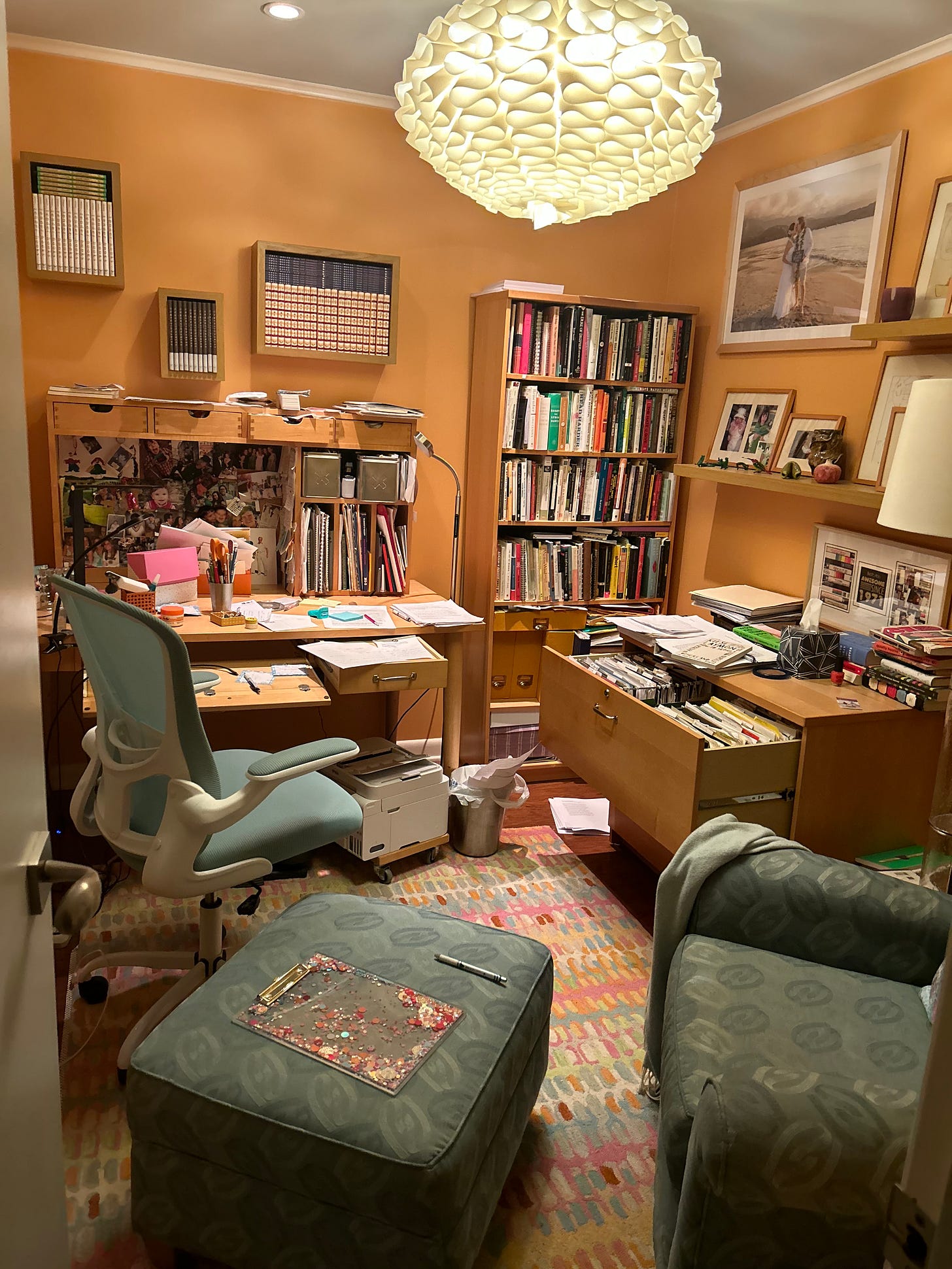
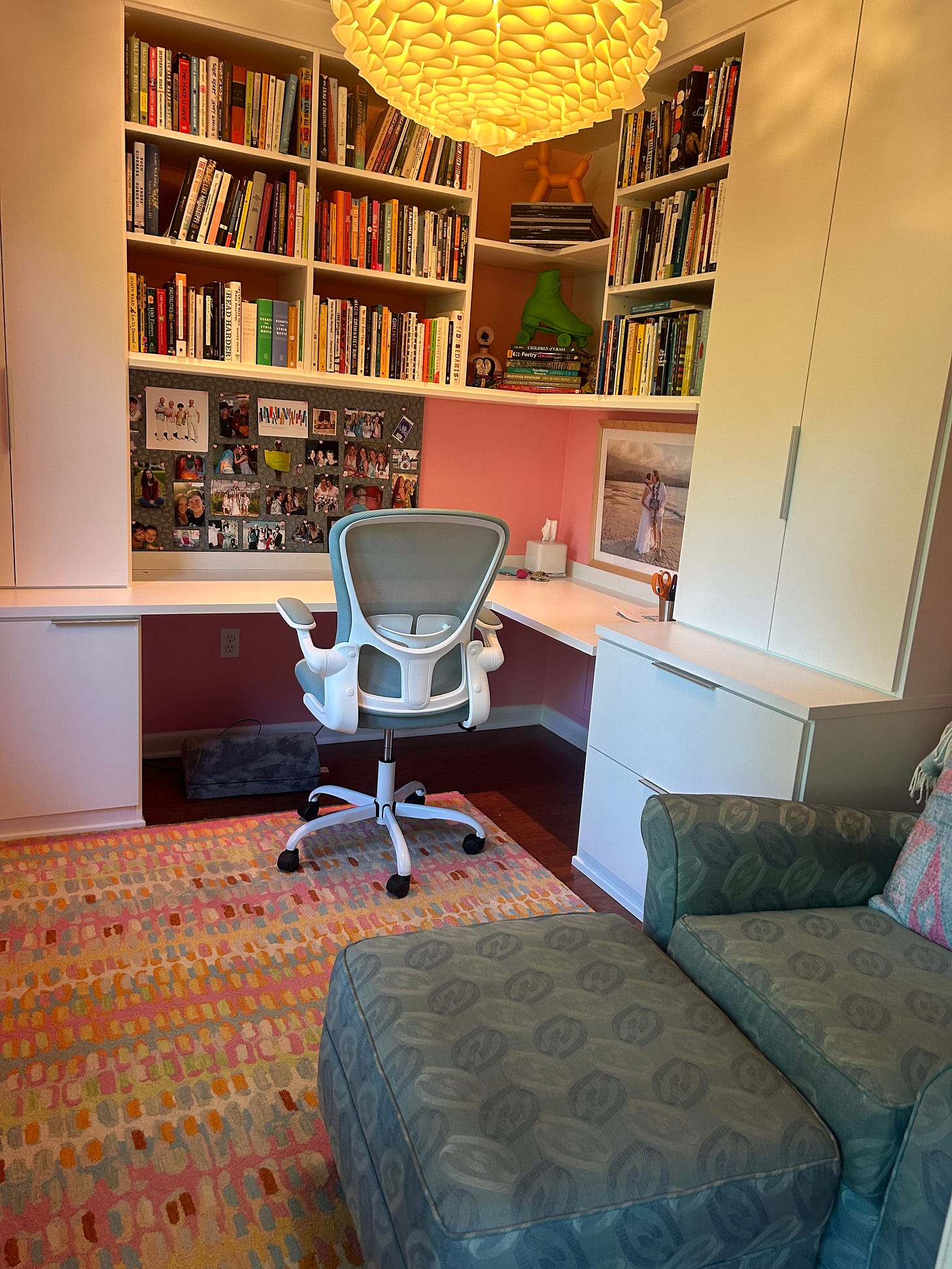
Back at Maine Media recalling how gracious you were last summer inviting me to sit in on your workshop when my instructor was stranded at the airport.
Flyers and grounders(baseball), fishing, crabbing, skinny dipping, cold beer. Oh yeah, we call 'em lightning bugs...love you and look forward to your moth story!